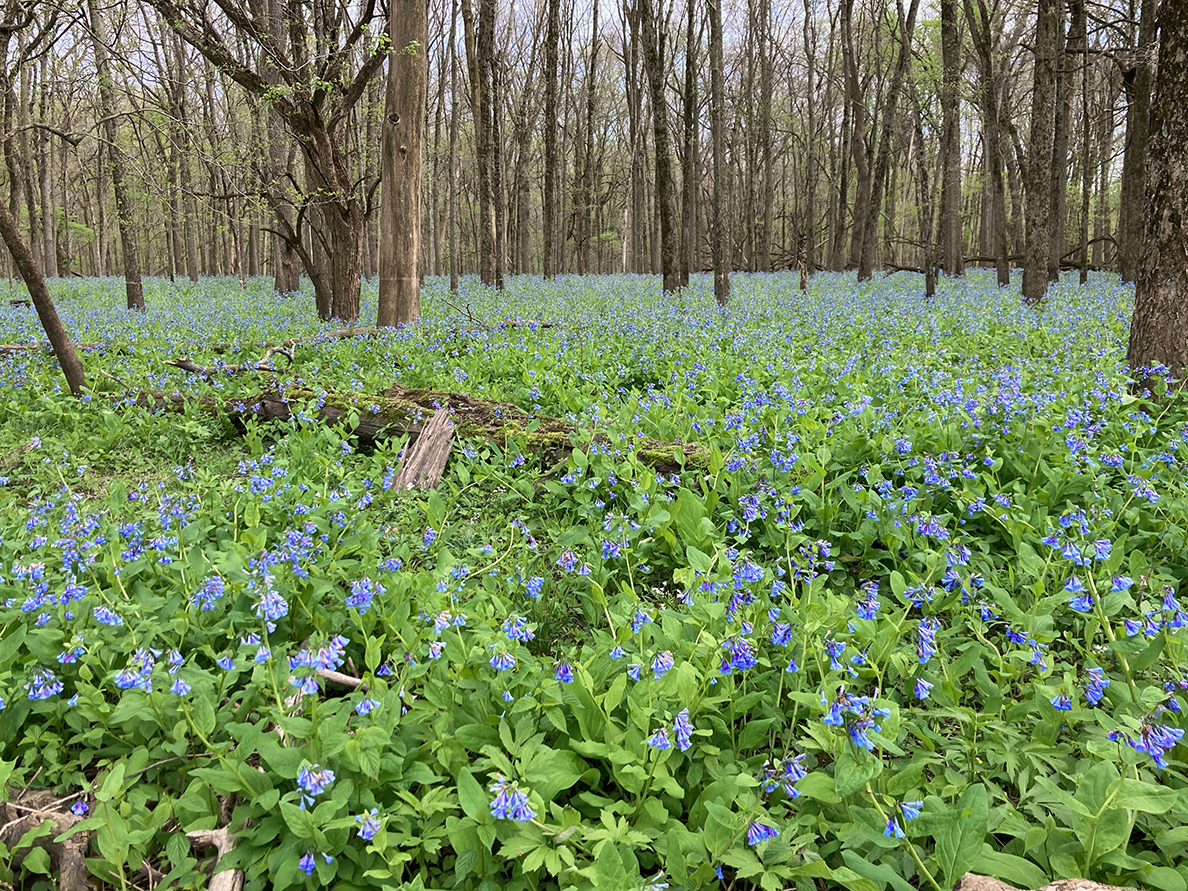April is the month when the forest floor comes alive with new growth. In Illinois forests, the ground layer comes alive while the tree tops still slumber. The amount of daylight steadily increases throughout the month as spring takes over in earnest. If you are lucky to be in the right place, at the right time, you will have the opportunity to walk through an ocean of blue as the Virginia Bluebells (Mertensia virginica) put on a spectacular show towards the end of the month.
Virginia Bluebells are a perennial native wildflower that grows in just about every county in the state of Illinois. They are most frequently found in rich, wooded valleys. In areas where creek valleys are wide and the soil is rich, they can form dense colonies. The blue of the flowers rivals the blue of the spring sky. It takes thousands of years for these colonies to build to this size. Unfortunately, many of these rich valleys were cleared in the late 19th century and farmed. The rich soils produced healthy vegetable crops in an era where agriculture was conducted with horse and walking plow. When modern agriculture forced the horses out to pasture, and tractors sought expansive ground to plant mile-long swaths of corn and soybeans, the small valley flats were abandoned. Long gone were the bluebells, and the valleys farmed for a few years then became overgrown with invasive species such as Autumn Olive, Bush Honeysuckle, and Multiflora Rose. We plowed paradise for a short-term gain and walked away, forgetting what we had lost.

Bottomland woods, loaded with Virginia Bluebells in March, at Humiston Woods Nature Preserve in Livingston County.
PHOTO BY MIKE MILLER
But not all bluebell flats were destroyed. Some were not cleared and plowed and still exist today. Locally, dense stands of bluebells exist at Forest Park Nature Preserve along the Valley Trail and at Singing Woods Nature Preserve along eastern end of the Sycamore Trail. Farther afield in McClean County along the Mackinaw River, Merwin Preserve has a spectacular showing, as does Funks Grove along Sugar Creek just south of Bloomington-Normal. One of my favorites of these ancient sites is Humiston Woods, just northwest of Pontiac along the Vermillion River. Forest Park and Singing Woods Nature Preserves protected by the Peoria Park District. The other sites are all protected by private foundations. These private land trusts have become an important part of preserving natural areas in Illinois.
April is also the month of Earth Day, which happens every year on April 22. It is a day to celebrate the environment, and to understand how we can all be better stewards of the natural world. It also is usually the time when Virginia Bluebells are in peak bloom. I have found that we sometimes need incentive to be better. If you feel like you need some inspiration, seek out a stand of bluebells. Sit amongst the sea of blue flowers and do nothing for a few minutes. You will find yourself on an ancient landscape, lost in time, and surrounded by beauty. I warn you though, you will probably not be the same person you were before you communed with the bluebells. That is not a bad thing.


2 comments for “Nature Rambles: Yes! Virginia Bluebells ring in serene sense of a paradise lost”
Recent Comments